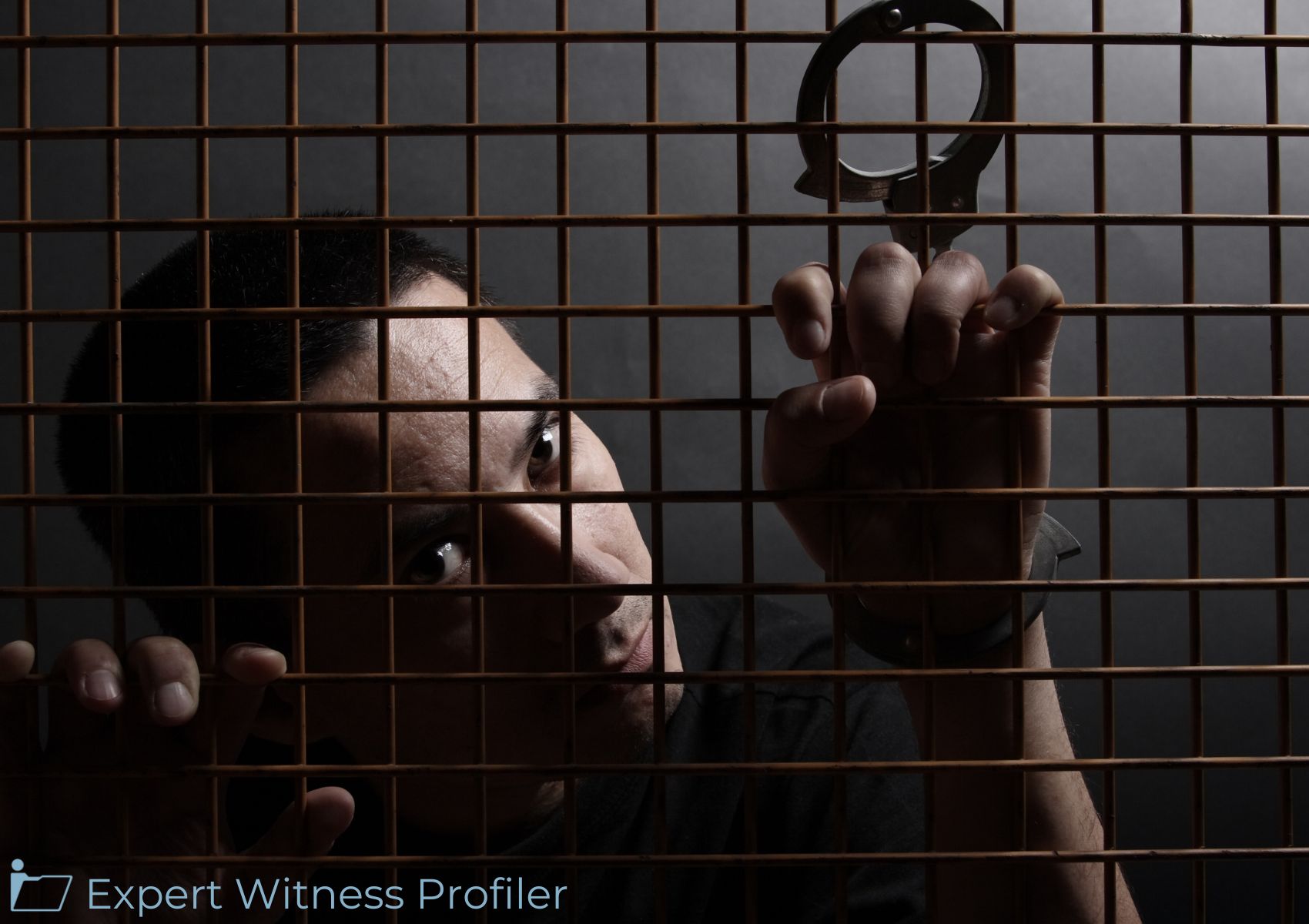Chemical Engineering Expert Witness’ Findings from the Battery Failure Investigation Excluded
Posted on October 23, 2024 by Expert Witness Profiler
On March 12, 2019, a fire broke out at a Forest River manufacturing facility. American Home Assurance Company, a subrogee of Forest River, says a lithium-ion battery from a Makita power drill is to blame. American sued both Makita Corporation of America and Makita U.S.A., Inc. under Indiana’s Product Liability Act. The two companies (called Makita today for short) sought to exclude testimony from two of American’s opinion witnesses, Michael Eskra and Fred Hackett, under Federal Rule of Evidence 702 and Daubert v. Merrell Dow Pharms., Inc., 509 U.S. 579, 113 S. Ct. 2786, 125 L. Ed. 2d 469 (1993).

Chemical Engineering Expert Witness
Michael Eskra has more than 43 years of experience in the battery industry. He earned a bachelor of science in chemical process engineering at the University of Wisconsin and later a master’s in engineering management at the Milwaukee School of Engineering. Early in his career, he worked as a process engineer in battery manufacturing plants, a manager of advanced battery engineering, and then a program manager.
He later ran a research and development company that developed batteries. Since 1996, he has owned Eskra Technical Products, Inc., which develops battery products and conducts battery failure investigations. He has published over 300 papers and articles. He is a member of various professional organizations, including the American Institute of Chemical Engineers, the National Association of Fire Investigators, the International Association of Arson Investigators, and the National Association of Subrogation Professionals. Makita focuses its attack on his methodology rather than cogently questions his credentials, so the court turns to his method.
Fire Investigation Expert Witness
Fred Hackett was a firefighter from 1977-1978 and then from 1982-1998. He was a lead arson investigator and documentation officer for the Pike Township Fire Department. For about eleven years before his retirement in 1998, he conducted technical investigations of commercial and residential fires and gas explosions. For five overlapping years during this time, he also was a fire and explosion investigator for Wolf Technical Services, Inc. In 1995, he became president of Midwest Forensics—a position he still holds today.
In both 2003 and 2008, he was certified as a fire and explosion investigator through the National Association of Fire Investigators. He has attended numerous conferences on fire investigations for the better part of 40 years, as well as served as an instructor at times, including on CT imaging and analysis for the past 15 years and state certifications for firefighters studying fire origin and cause for the past 34 years. He has received fire and arson training over the years too.
Discussion by the Court
Michael Eskra
Michael Eskra is American’s proposed battery expert. He presents two opinions: that the fire at Forest River was most probably caused by a Makita power tool battery’s failure, and that the poor design of its battery management system caused its failure when its cell became unstable under normal intended use. He views the damage to this cell to be inconsistent with fire attack, and instead consistent with internal damage and thus a source of the fire.
Eskra inspected battery cells from the Forest River site to determine whether a battery cell caused the fire. He started his work in July 2019 (about four months after the fire). During the July 2019 inspection, Eskra worked with Fred Hackett (the insurer’s area of origin witness) to review about 80 cell artifacts.
Rounded ends are indicative of a fire attack as opposed to a fire’s cause
As one feature, he looked for “bulbous ends, so if it had bulbous ends, he set them aside.” When pressed to quantify the degree of bulbous or rounded ends (at the cell’s negative end), Eskra admitted he could not do so, nor had he performed any testing to quantify whether a cell was “rounded enough.” At the time he prepared his report and testified in deposition, he had not authored any peer-reviewed articles on this theory of rounded ends being indicative of a fire attack as opposed to a fire’s cause.
Eskra has never tested the elongation of the cell’s crimp
Eskra looked for longitudinal stretching or elongation of the cell’s crimp. He explained that, when gas gets generated during heating over time, the crimp softens and elongates. In this event, according to him, it “tends to be more that it was a slow heating process, a longer heating process, so it would be heat-attacked.” Even this feature he struggled to specify, merely saying external heat “tends to move it a little bit”—but even then “almost all cells will vary” and even “in causal cells it may move” too. To date, he has never measured this elongation to know how much or tested this feature to confirm his theory; and, at the time of his report, he had not published his theory for peer review.
Eskra admitted that he had not performed any testing to validate his theory of the jellyroll being pushed to the negative or vented ends
Eskra says cells with bulbous negative ends or elongated crimps should then be evaluated by x-ray. He selected 20 cells for further analysis. Fred Hackett completed the x-rays at a different location, and Eskra thereafter observed the films through Skype. Eskra never obtained the x-rays and never preserved them.
In his method, Eskra looked for differences in the active material or “jellyroll” within the cylinder of the battery. The jellyroll is the core of the battery cell—”layers of cathode, separator and anode [are] wrapped together to form a spirally-wound ‘jellyroll’.” His report offers exemplar x-rays (not from this case) of his focus at this step—in particular, he looks for large gaseous pockets at the negative ends that will eliminate the cells as causal; and, contrastingly, the jellyroll remains pushed toward the negative and positive ends that will identify potential causal candidates.
Eskra admitted that he had not performed any testing to validate his theory of the jellyroll being pushed to the negative or vented ends .
Eskra reexamined rounding and elongation, and the venting of pressure inside the cell that contributed to these features
Nothing seems to memorialize Eskra’s selection process at this stage, but he narrowed the number of candidates from 20 cells to four (two cylindrical cell pairs) using his method.
Of curiosity to him, each of the cell pairs had one cell that had a rounded negative end and elongated crimp, which to him exhibited signs of external heating, whereas the paired cell did not. He ordered CT scans of the two cell pairs (someone else conducted them), and he received the scans (and preserved these).
At this stage, he reexamined rounding and elongation, and the venting of pressure inside the cell that contributed to these features.
Eskra concluded that the damage to the cell was internal in nature and should be considered as a probable source of ignition of the fire
Eskra acted as a sort of tracker or hunter. He examined the cell to determine whether it showed signs of venting at multiple points and, if so, which one occurred first.
Eskra started by finding the venting point, then beginning at the opposite end worked his way through the axial plane moving longitudinally to look for intact jellyroll.
Venting would not inform whether a cell caused the fire, but inform the locations where he needed to examine. With a causal cell, chaos within the jellyroll will have occurred before the gas pressure vents, including melting or cutting or additional shorting.
Using the first CT scan, Eskra determined that this cell pair was damaged by external events based on his examination of rounding, elongation, and jellyroll analysis. Using the second CT scan, he determined that one cell—what he describes as the lower or bowed cell—was fire-attacked because of “a large gas bubble appearing in the lower left longitudinal section.” For the other top cell, he found no evidence of the “same distortion or gas generation and shoving of the jellyroll materials.”
Eskra thus focused more heavily on this top cell of the second pair. He used a longitudinal image of this cell to say the negative end of the cell appeared “fairly normal” and the spacing between the jellyroll and the can at the negative end was “slightly tighter” than a healthy cell. Without having x-rayed all the other cells, he then offered a prediction—that this would be the “opposite of what would be seen on all the other cells if they were all x-rayed.” In short, he eliminated all the other cells as causal because they showed signs of physical rounding and venting.
Eskra’s theory has not been generally accepted in the relevant scientific community
The Court held that Eskra has never tested his theory—not once—though it could be tested. Indeed, he has had decades to do so. His theory has never been published. His theory has not been generally accepted in the relevant scientific community, much less accepted by peer review at this point.
American has the burden to demonstrate its proposed expert’s reliability. At first, American says Eskra employed a methodology similar to that described in C. Mikolajczak, A Scientific Methodology for Investigation of a Lithium Ion Battery Failure, a 2007 paper by Exponent Failure Analysis Associates, a reputable firm well-known to the court. Eskra agreed his method has never been peer-reviewed, though he too equated his method to that of Exponent. The Court held that it turned out to be a poor defense of Eskra’s method because he deviated in material ways from it. His method marginally overlaps the Exponent method at best. Exponent mentions the importance of x-rays and CT scans certainly, but it speaks little of negative end rounding, crimp elongation, or the particular jellyroll dynamics that Eskra offers to support his causation theory, and Exponent directs rather key investigative steps that Eskra just skipped.
Eskra offers only subjective judgments throughout his opinion
Without a tested or generally accepted model, the Court held that Eskra cannot offer an objective criterion for an elongated crimp either, calling a “a little bit” of movement enough to classify a cell “fire-attacked” and eliminate it from consideration as a cause. But this elongated crimp also proves troublingly variable and subject to his mere say-so for interpretation, for he concedes that “almost all cells will vary” and even “in causal cells it may move” too. He can’t offer a measurement, much less even a “specific description” of how much rounding would typically demonstrate a fire-attacked cell versus a causal cell.
American, as the proponent of this opinion, never once explains why such subjective imprecise criteria—which may show one thing or indeed the opposite thing—can reliably support his winnowing of 80 candidate cells to only 20 cells for x-ray analysis.
Eskra’s method gets worse at the x-ray stage because he preserved none of his work. He claims to have examined images of 20 selected cells, but he cannot produce any x-rays. Of course, he reviewed these images through Skype with another fire investigator, but no one else seems to have retained any x-rays either.
Even giving Eskra the benefit of the doubt that x-ray analysis through Skype could qualify as such a close examination of a cell’s internal features (e.g., gas pockets, jellyroll movement, and the like), he offers nothing but his say-so today about what could be seen back then. He never videotaped the down-selection process; he created no notes or other documentation from his review of x-rays; his report replicated no x-ray images; and no one preserved the x-ray images.
Eskra’s experience without a reliable, testable methodology is not sufficient
Eskra winnowed 80 cells down to 4 cells (two 2-cell pairs, with only one cell of each pair of real interest to him). So by this point, 95 percent of his process occurred under unreliable circumstances—untested or unverifiable as it was. Exponent’s method may offer something testable and repeatable, whereas Eskra’s method did no such thing. He may be experienced, and he may have done better in other cases, but “experience without [a] reliable, testable methodology is not sufficient.”
Exponent explains the critical steps of recovering physical evidence, reconstructing that evidence, and then examining that evidence in a way that preserves the chain of custody for further analysis. Indeed, the scientific method anticipates that an expert will similarly document her work, and then preserve it for others to review or replicate should that prove necessary.
Eskra deviated from the Exponent method in a critical way when he concluded that the lack of external damage to this cell and the good condition of the jellyroll at the negative end made this cell the probable cause of the fire, albeit by saying this would be “the opposite of what would be seen on all the other cells if [they] were all x-rayed.”
Exponent says, to determine the cause of a battery failure, “it is generally necessary to open a damaged battery pack, extract and examine the remains of the cells, the battery protection printed circuit board(s) (PCBs), and any fuses or thermal cut-off devices.”
To say Eskra “primarily employed the same methodology” or “completed virtually all steps” as Exponent are bold overstatements
Exponent recommended gathering information about the battery cells, which “can generally be collected from the end user’s description of the background of the device and the events of the incident, as well as from the incident site.”
Eskra collected no information from Forest River about the use of these battery cells. He didn’t know their state of charge. He didn’t know where the batteries had been found, or whether they were even in the area of the fire’s origin.
Exponent recommended “thoroughly document[ing] the condition of the [battery] system upon receipt, both for establishing the chain-of-custody and to provide clues as to the root cause of the incident,” including “damage patterns such as soot deposits, regions of charring, and evidence of melting” . The Court held that Eskra failed to do this—he never photographed each cell he visually examined or took notes that would show his observations of individual cells. They reflect a fundamental failure to conform his method to the one he says he tried to use.
Fred Hackett
Fred Hackett is American’s proposed fire origin expert. He opined that the fire originated within Forest River’s tool crib—more particularly, at or near the southeast end of the tool crib, following the failure of a lithium-ion battery.
Hackett was retained to determine the fire’s origin and cause on March 13, 2019—the day after the fire. He and his associate completed an initial “scene size-up” on March 14 and 15. On March 14, Hackett interviewed the plant manager (David Whisler). At some point, he also interviewed the tool crib manager (Lanny Kistler). Hackett collected information from the Elkhart Fire Department, which responded to the fire.
In preparation for his opinion, Hackett considered a great deal of information. He reviewed the deposition of Larry Shaffer who first saw the fire, overview photographs of the building, a video taken inside the building during the fire, physical damage to a desk located in the tool crib, and burn patterns on a filing cabinet.
Hackett’s opinion contravenes the NFPA 921
Makita advanced several arguments to exclude Hackett’s opinion. First, the company says his opinion contravenes the National Fire Protection Association Guide for Fire and Explosion Investigations (commonly called NFPA 921). NFPA 921 is “a comprehensive, peer-reviewed, and detailed guide for fire investigation, and [courts] have held that its methodology is reliable for purposes of Rule 702.”
NFPA 921 identifies traditional sources of information to use in determining a fire’s origin—witness statements, electronic data, burn patterns, fire dynamics, and (under the latest 2017 edition) arc mapping, though the extent of melting here prevented every investigator from arc mapping.
The Court found that Hackett relied on burn patterns on the filing cabinet directly west of the desk that showed directional fire traveling from east to west. Moreover, Hackett relied on multiple sources of information to reach his opinion, in accordance with NFPA 921. He also explained how these sources led to his conclusion.
There also seems to be a disconnect between the parties as to whether Hackett reviewed the deposition testimony of six eyewitnesses to the fire in preparing his report or sometime afterwards.
Makita argued that Hackett’s billing records identify a different date for reviewing these depositions (a month after issuing his report). Hackett testified to the clerical error in his bill. Because Hackett offered a logical explanation for the billing error, the Court held that it is a credibility question—one of weight, not admissibility.
Hackett’s reliance on the first observer in helping to pinpoint the fire’s origin was inappropriate
As such, this motion devolves into whether Hackett afforded a particular eyewitness too much weight or not enough weight, and such points are designed for crossexamination rather than a pretrial attack on his method. To this point, under NFPA 921, a fire investigator in the field may evaluate the quality of the information shared by an eyewitness, assessing with common sense the person’s knowledge and any potential bias.
In addition, Hackett relied on testimony from Larry Shaffer—the first person to see the fire. Shaffer said he saw the fire at or near the southeast corner of the tool crib, what he described as a fire about one foot tall and two feet wide. He saw the fire nowhere else. Cannisters began exploding, and he exclaimed the fire’s presence to his fellow employees. Hackett also relied on statements made by David Whisler (the plant manager) during an interview with the Elkhart Fire Department’s investigator and a few days later to Hackett’s associate that the fire appeared near the door of the tool crib. Hackett additionally used screenshots of a video taken by an unnamed eyewitness in the early stages of the fire.
Makita marshals testimony from the other eyewitnesses, but each seem to have seen the fire later in time and in a different location. The Court held that it cannot be said on this record, much less under the NFPA 921 method, that Hackett’s reliance on the first observer in helping to pinpoint the fire’s origin was inappropriate, or that his reliance on early statements from the plant manager soon after the event rather than years later in deposition was inappropriate.
Makita largely argued that Hackett chose his data poorly.
Hackett incorrectly assumed the tool crib was constructed of a porous metal cage material
The Court’s review of other information offered by Makita illustrates that the company’s concern focuses on Hackett’s selection of and weight placed on data, not that his opinion is bereft of a legitimate industry-recognized methodology or factual footing.
In another area, Makita simply has its facts wrong. The company argues that Hackett incorrectly assumed the tool crib was constructed of a porous metal cage material, suggesting he did this so he could claim, in some “tortured effort,” that the fire witnesses saw outside the tool crib was actually inside the crib. The company represents that Hackett was forced to admit that the tool crib’s walls were solid. These are gross misstatements of Hackett’s testimony, and the Court will not entertain them.
Hackett’s opinion was reached based on an expectation bias and later reinforced by a confirmation bias framed with cherry-picked facts
Makita next argued that Hackett’s opinion was reached based on an expectation bias and later reinforced by a confirmation bias framed with cherry-picked facts. This is an argument that Makita may offer the jury if the company thinks it compelling. Makita offered no evidence on this record that Hackett fell prey to an early expectation bias—a preconceived idea of the fire’s origin—or a confirmation bias—merely selecting data to confirm this idea.
Hackett used a negative corpus method, which has long been abandoned by the fire science community
Makita also complained that Hackett used a negative corpus method, which has long been abandoned by the fire science community. The Court held that although Hackett used a process of elimination in reaching his conclusion, he had supporting evidence for eliminating certain potential ignition sources.
Hackett developed nine hypotheses as to possible ignition sources. For eight, all save a hypothesis that lithium-ion batteries started the fire, he ruled them out as ignition sources and explained why, including by relying on witness testimony and the examination of artifacts.
Hackett has the expertise, factual analysis, and industry-recognized method to explain why he eliminated certain potential causes of the fire; whether the jury will credit these explanations or find them flimsy, only the jury can say. The Court held that it is still is a far cry from saying a lithium-ion battery caused the fire.
Hackett confessesed he has no expertise in batteries, and no expertise in distinguishing batteries that have caused a fire from those that have been attacked by one. He repeatedly admitted he must defer to Eskra as to causation.
Hackett proposes merely to parrot Eskra
The Court held that Hackett isn’t merely relying on another expert’s opinion, but proposing to repeat it—worse yet without a factual understanding of the circumstances, any supporting testing or analysis, or a credentialed basis for offering the opinion. This makes his opinion unreliable.
Moreover, the record is devoid of any experience Hackett has developed with fires originating from lithium-ion battery failures or the dynamics of such fires (much less a Makita-designed cell or comparable tool manufacturer), and that burden rests on American.
American suggests that Hackett adds independent research to Eskra’s findings, but American cites only two YouTube videos—both of lithium-ion powered scooters, with no information about the circumstances of those fires or the design of those lithium-ion batteries.
Hackett lacks pertinent expertise
Hackett may say a smoldering fire was unlikely the cause and that a “rapid-ignition sequence of events” makes more sense, but he cannot say this fire originated from a lithium-ion battery. He also may say this fire appears to have been violent, explosive, and immediate in nature (and explain why based on this fire’s dynamics and site or witness evidence), but again he cannot say this fire originated from a lithium-ion battery.
The Court held that not only does he lack pertinent expertise, but he has not done the testing or even examined the battery cells to validate this opinion.
To sum it up, the Court held that Hackett’s opinion would not aid the jury to decide an issue of consequence—a question of fit and would instead invite the jury to speculate that because a lithium-ion battery can cause a fire that it must have done so here.
The Court held that Hackett can offer his opinion about the fire’s area of origin and its related dynamics, as well as explain why certain potential sources of ignition should be eliminated, but he cannot speak to the ultimate cause of the fire.
Held
- The Court granted the motion to exclude American’s expert Michael Eskra’s opinions.
- The Court granted in part and denied in part the motion to exclude American’s expert Fred Hackett’s opinions.
Key Takeaway:
Application of the Amended Rule 702
A witness may testify in the form of an expert opinion when (1) the witness is “qualified as an expert by knowledge, skill, expertise, training, or education;” (2) the testimony is “based on sufficient facts or data;” (3) the testimony is “the product of reliable principles and methods;” and (4) the opinion “reflects a reliable application of the principles and methods to the facts of the case” in such a way that the testimony will “help the trier of fact to understand the evidence or to determine a fact in issue.” The proponent of expert testimony must establish its admissibility by a preponderance of the evidence.
In other words, the rule has been amended to clarify and emphasize that expert testimony may not be admitted unless the proponent demonstrates to the court that it is more likely than not that the proffered testimony meets the admissibility requirements set forth in the rule.
American has the burden to demonstrate its proposed expert’s reliability. However, American has failed to discharge its burden. For instance, when American said Eskra employed a methodology similar to that described in a 2007 paper by Exponent Failure Analysis Associates, it turned out to be a poor defense of Eskra’s method because he deviated in material ways from it.
Moreover, American suggests that Hackett adds independent research to Eskra’s findings, but American cites only two YouTube videos—both of lithium-ion powered scooters, with no information about the circumstances of those fires or the design of those lithium-ion batteries. One could hardly call seconds of two YouTube videos independent or sufficient evidence to render a causation opinion, given Hackett’s ready admissions that he is not the person with expertise to ask.
Case Details:
| Case Caption: | American Home Assurance Company V. Makita Corporation Et Al |
| Docket Number: | 3:21cv252 |
| Court: | United States District Court, Indiana Northern |
| Order Date: | September 30, 2024 |





